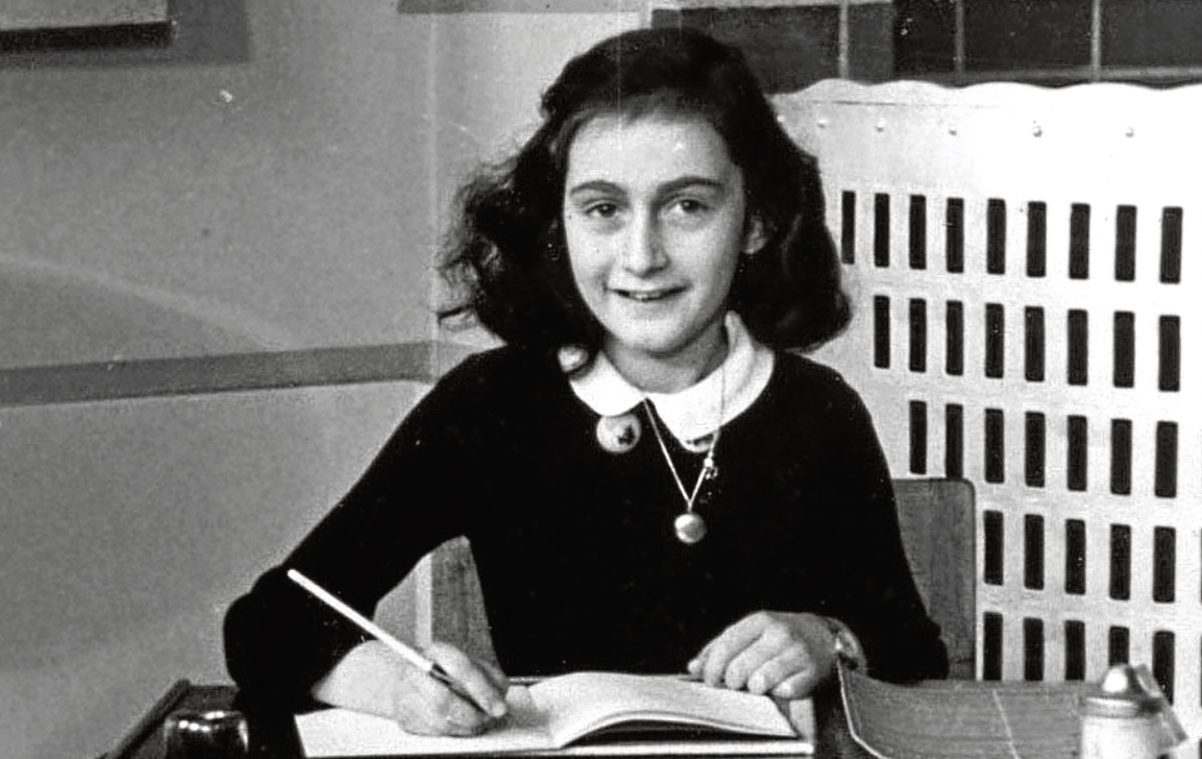
ON June 12, 1942, a little girl in Amsterdam received a special birthday present that would change how we see the world.
Anne Frank would use her new diary to detail her most-intimate thoughts, unaware that the whole world would read them one day and will probably keep reading them forever.
What they would reveal would break our hearts, knowing her situation while writing it, but the diary also shows what a kind, thoughtful, person she was.
Born in Frankfurt in 1929, she wrote what would become The Diary of a Young Girl between 1942 and 1944, while hiding from the Nazis.
Her family had moved to Amsterdam before Anne — born Anneliese — was five.
When the Germans occupied the Netherlands, Anne and her family hid in concealed rooms behind a bookcase in the building where her father, Otto, worked.
Mother Edith and sister Margot were there, too, and all were finally caught in August 1944. The sisters were sent to Bergen-Belsen, and within a few months, were dead, probably of typhus.
Otto would be the only one to survive, and found upon his return to the Netherlands that Miep Gies, one of their helpers, had managed to save Anne’s diary.
In translation, it was first published in 1952 and has been read in multiple languages ever since, one of the most-loved, best-known books of all time and the subject of films, books and plays.
The funny thing is, Anne’s birthday gift wasn’t even meant to be a diary. She had pointed it out in a shop window to her dad a few days before her birthday, perhaps dropping heavy hints.
He got her the autograph book, bound in red-and-white checkered cloth, with a little lock on the front, and the birthday girl decided it ought to become her diary.
In an entry just over a week later, Anne listed many of the things Dutch Jews were prevented from doing, all the restrictions that made life so horrible.
Otto and Edith intended going into hiding in mid-July, but when Margot received notice to report for relocation to a work camp, they did so earlier.
Margot, too, kept a diary, although sadly no-one has ever found it.
Just before they hid themselves away, behind the bookcase entrance, Anne spoke to her friend, neighbour Toosje Kupers. She gave her a book, a tea seat, a tin of marbles and the family cat.
“I’m worried about my marbles, because I’m scared they might fall into the wrong hands,” Anne told her. “Could you keep them for me for a little while?”
Just three years ago, during a house move, the marbles were found again. It seems that Toosje offered them to Otto on his return, but he let her keep them.
It had been on Monday, July 6, 1942, that the Franks moved into a three-storey space entered from a landing above offices, with some of Otto’s friends trusted to keep it secret.
They left their home in a mess so the Nazis would assume they had fled in a hurry, a note left that suggested they may have headed to Switzerland.
The Franks would be kept updated on how the war was going, but the supply of food and other necessities got harder as time went on.
The handful of people who knew they were in hiding would all be facing death penalties if they were uncovered, and you can only imagine how tense it was, for hiders and hidden.
There’s a lot, of course, that we don’t have to imagine, because of that incredible diary written by the little girl.
For instance, entries like this leave readers in no doubt what it was like — “Not being able to go outside upsets me more than I can say, and I’m terrified our hiding place will be discovered and that we’ll be shot.”
Not long before she was found and transported to certain death, she was still an optimistic girl, writing: “I’d like to spend a year in Paris and London learning the language and studying art history.
“I still have visions of gorgeous dresses and fascinating people. I want to see the world and do all kinds of exciting things.”
When they were arrested, along with their protectors, they were considered criminals because they had hidden, and were sent to hard labour punishment barracks.
Who gave them away?
This has never been proved, and while there have been theories and counter-theories, allegations and accusations, it looks like we will never know for sure.
What we do know is that a typhus epidemic spread through Bergen-Belsen early in 1945, killing 17,000 prisoners.
Witnesses said that a weak and sickly Margot fell from her bunk and died of the shock, with Anne dying a few days later.
Some said both girls had shown signs of typhus in February.
That year of course, the Second World War in Europe came to an end. We can only be grateful that we still have the most remarkable, heartbreaking diary ever written to remember Anne Frank and the millions who perished.

Enjoy the convenience of having The Sunday Post delivered as a digital ePaper straight to your smartphone, tablet or computer.
Subscribe for only £5.49 a month and enjoy all the benefits of the printed paper as a digital replica.
Subscribe